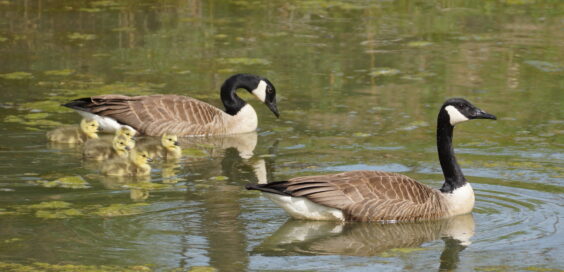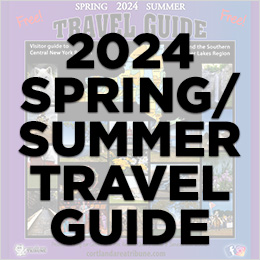
Creature Feature – Duck, Duck, Goose!
Posted by Dustin Horton // April 17, 2023 // Articles, Creature Feature
Ducklings and goslings receive different kinds of parental care. For example, upon hatching, and for a few or even several days thereafter, most waterfowl babies are incapable of thermoregulating — that is, they are incapable of keeping warm by automatically regulating their body temperature – so to maintain a proper body temperature, they rely instead on a parent that provides warmth by covering them with their body and wings. Called ‘brooding’, this behavior also protects hatchlings from harsh precipitation, strong sunlight, wind… and predators.
Protecting vulnerable offspring from predators is a critical form of parental care among many waterfowl species, especially as young often leave the nest within a few hours after hatching. Parents typically sound an alarm call when they detect danger, causing the young birds to scatter, freeze in place or move closer to their parent(s). In most duck species, the hen raises her brood alone and may try to lure a predator away from her ducklings by feigning a broken wing.
I’d wager that at least some readers have experienced the wrath of Canada geese after having passed too close to their nest or goslings. Papa goose, in particular, vigorously defends his family; and if the pair’s vociferous honks and scorching hisses fail to deter a trespasser, he may attack, biting and using his powerful wings to pummel any animal or person that threatens his family. While these hostile behaviors earn geese a reputation as bullies, it’s important to recognize that the aggressiveness is defensive and can be avoided if we respect their family space. After all, don’t we demand the same for our own families?
Article & photo by Margie Manthey












